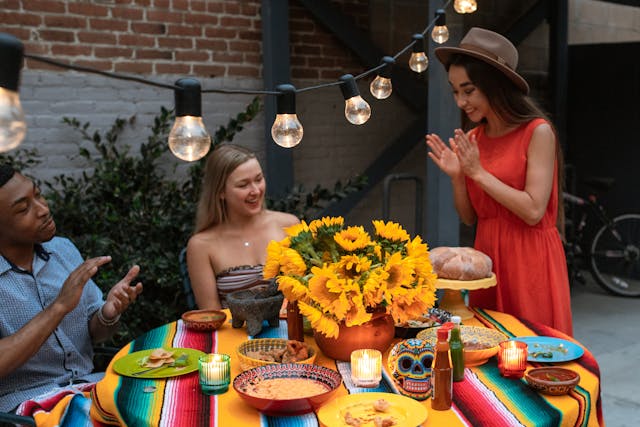Tired of the dull “yup” replies?
Staring at that “yup” reply and wondering how to keep the conversation rolling without sounding like a robot or an alien? Fear not! In this guide, we’ll share snappy, clever, and downright delightful responses to transform that monosyllabic “yup” into an opportunity for connection, clarity, and maybe even a chuckle or two. Dive in to find the perfect comeback that fits your style and keeps things breezy!
Key takeaways:
- Acknowledge with positivity: Gratitude sets a friendly tone.
- Decode the “yup”: Consider context, tone, body language, and history.
- Polite clarity: Balance acknowledging with request for more info.
- Embrace brevity: Short responses can be refreshing.
- Prompt for more: Encourage further dialogue for dynamic conversations.
“Awesome, Thanks for Confirming!”
Appreciation never goes out of style. Acknowledging someone’s response with a positive note sets a friendly tone. It’s a simple way to show gratitude, and it subtly reinforces good communication habits.
Plus, it’s super versatile. You can use it in both formal and informal settings. Got a quick, efficient response at work? This works. Your friend just confirmed dinner plans? Boom, you’re golden.
It also shows you’re attentive. By thanking them for confirming, you demonstrate that their response isn’t just noted; it’s valued. Win-win.
Remember, positivity is addictive. Spread it generously.
“Is That a ‘yup’ of Excitement or a ‘yup’ of Dread?”
Ever notice how a simple “yup” can carry multiple layers of meaning? It’s like a tiny word with a secret double life. Is the “yup” coming from a place of sheer excitement, or is it shrouded in gloom?
Body language often holds the clues. If you’re chatting face-to-face or via video, observe their expression. A smile or eager nod often signals enthusiasm. Conversely, a blank stare or sigh could imply reluctance.
Context is king. Did you just invite them to a party, or suggest they clean the garage? The latter might indeed inspire a “yup” of dread.
Tone speaks volumes. In verbal conversations, excitement usually sounds upbeat. A flat, monotone “yup” might indicate they’re not exactly jumping for joy.
Directly asking can be a lifesaver. No harm in clarifying with, “Just checking if you’re as thrilled about this as I am!”
Pay attention to history. If they usually respond with pep and suddenly their “yup” sounds like a funeral march, something might be off.
Observing these nuances will help decode that enigmatic “yup” and keep your conversations lively and meaningful.
“Great! Just Wanted to Make Sure. :)”
Here, we use “Great! Just wanted to make sure. :)” and it strikes a perfect balance. It acknowledges the “yup” while showing you value clarity. It’s polite without being too formal.
This phrase also leaves room for further clarification if needed. The smiley at the end? It keeps things light-hearted and friendly, like a virtual handshake. It conveys that you’re approachable, even in text.
Additionally, it subtly prompts the other person to add more info if they had meant to elaborate but didn’t. It’s a gentle nudge without any pressure. Plus, it keeps the conversation active without seeming pushy.
“Short and Sweet, I Like It!”
Sometimes, brevity is refreshing. Embracing short responses can streamline communication, making everything simpler and quicker.
First tip: Acknowledge the simplicity. People appreciate it when their efforts are noticed, even if it’s just a single word.
Second tip: Reinforce your positivity. Sharing your enjoyment of concise communication sets an encouraging tone, making everyone feel good.
Third tip: Create space for further dialogue. If needed, gently prompt for more details or follow-up with another question to keep the conversation flowing.
Remember, sometimes less is indeed more.

“Glad to Hear It! Anything Else to Add?”
Sometimes, people say “yup” to keep things short and simple. But what if they’ve got more nuggets of wisdom or details to share? Prompting for more keeps the conversation dynamic.
First, it shows you care. You’re not just ticking boxes, you’re genuinely interested.
Second, it opens the floor for additional insights. Maybe there’s something they forgot to mention initially, or some context that could be crucial.
Lastly, it encourages thorough communication. This can prevent misunderstandings and make sure both parties are on the same wavelength.
So there you go, keeping it conversational yet informative!
“Appreciate the Prompt Response!”
Showing appreciation for a quick reply can work wonders.
First, it reinforces good communication habits. People love recognition for their efforts, even in something as simple as texting back swiftly.
Second, it sets a positive tone for the conversation. You’re not just exchanging words; you’re engaging on a more personal level.
Third, it can prompt more thorough responses in the future. When folks feel valued, they’re likely to be more responsive.
Finally, it’s simply polite. Manners never go out of style, even in digital chatter.
“Crystal Clear. Got It!”
Sometimes, acknowledging a message with a simple “crystal clear” does the trick. It conveys clarity, certainty, and a touch of coolness. Here are some reasons it works:
- Confidence: It shows you’re on the same page without doubts. You’re in control.
- Efficiency: There’s no need for back-and-forth. Everyone knows the plan.
- Professionalism: It sounds sharp and reliable, perfect for work settings.
- Positivity: The phrase is straightforward yet feels upbeat.
Next time someone responds with “yup,” throw in a “Got it!” for good measure. It’s succinct, clear, and keeps the conversation moving.
“*Thumbs Up Emoji*”
Sometimes, simplicity wins. The humble thumbs-up emoji is a quick, universally understood response that conveys, “Got it!” without much ado. It’s swift, it’s modern, and it’s like a digital nod of agreement.
Why use it?
- It’s clear and unambiguous.
- Saves time and words.
- Friendly but not overly familiar.
- Fits informal and semi-formal contexts.
An added bonus is avoiding the trap of overthinking your reply. Who knew a tiny emoji could be a big communication win?
“Alright, Moving Forward Then!”
Time to put the pedal to the metal! When someone says “yup,” they’re often giving you the green light to proceed. Here’s how to use this:
Acknowledge the response. Confirm that you’re ready to move on; it shows you’re paying attention.
Clearly outline the next steps. Whether it’s sending an email, making a call, or jumping to the next agenda item, keep it clear.
Maintain a positive tone. Nothing says, “I’m excited about this” like a friendly demeanor.
Check for understanding. Make sure everyone is on the same page to avoid future headaches.
Keep things rolling smoothly. If there’s momentum, capitalizing on it can be key to productivity.
“All Set, Thanks!”
You’re ready to roll and just need to seal the deal. A simple, “All set, thanks!” is an absolute gem.
Why?
It’s quick and clear. You’re acknowledging their response and confirming you’re good to move forward. Boom, efficiency.
It’s polite but not over-the-top. A sprinkle of gratitude with zero calorie count. Perfect balance.
It closes the loop. No one’s left wondering if there’s more to discuss. You’ve tied things up like a neatly wrapped present.
Next time someone drops a “yup” on you, consider this golden nugget. It’s the equivalent of a digital high-five.
